Tucked along the banks of the Dehcho (Mackenzie River) lies one of the only few monuments in the country to honour unmarked graves of students who died while attending residential school.
Over the last few weeks, Paschalina Nadli, an intergenerational survivor, has visited the monument in honour of her mother Georgina Josephine who attended the Sacred Heart Residential School in Zhahti Kue, also known as Fort Providence, N.W.T.
“When you sit and listen to the Elders and families, it’s hard to believe this happened to our people. I heard so many horror stories. The one that sticks with me the most would be of babies being incinerated and crying,” Nadli said.
She recognizes some family names listed on the monument which pays tribute to roughly 300 people buried nearby — with 161 of those being Indigenous children who were stolen from families and forced to attend the Sacred Heart school, according to the memorial.
“I feel sad, all the names on there. Were we related to anyone? Are there more children in there we don’t know about besides the ones in there? I guess that brings me to tears to know that relative we’ll never see them again,” she said.
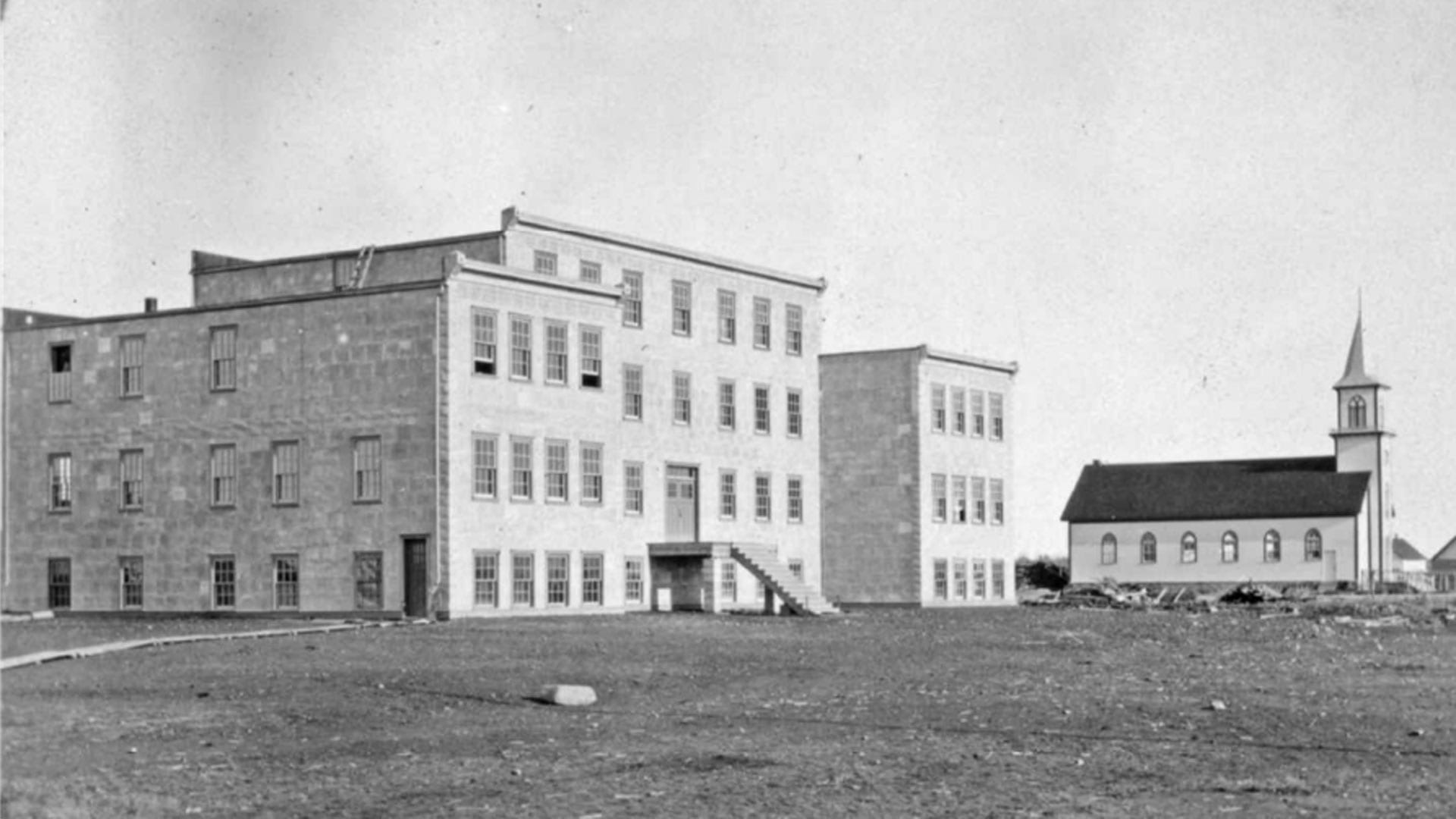
The school was run by the Roman Catholic church and operated from 1867 to 1960.
According to the monument, the cemetery was used for burials between 1868 and 1929 and children were taken from up and down the river as far away as Fort McMurray, Alta. and Aklavik, N.W.T.
Albert Lafferty, a residential school survivor grew up hearing stories from his parents, uncles and Métis Elders.
“They would sometimes talk about the old cemetery, which was in that area and had been ploughed over and the crosses had been taken down,” Lafferty said.
In 1992, Lafferty led a local initiative to ensure the protection of the area from future development.
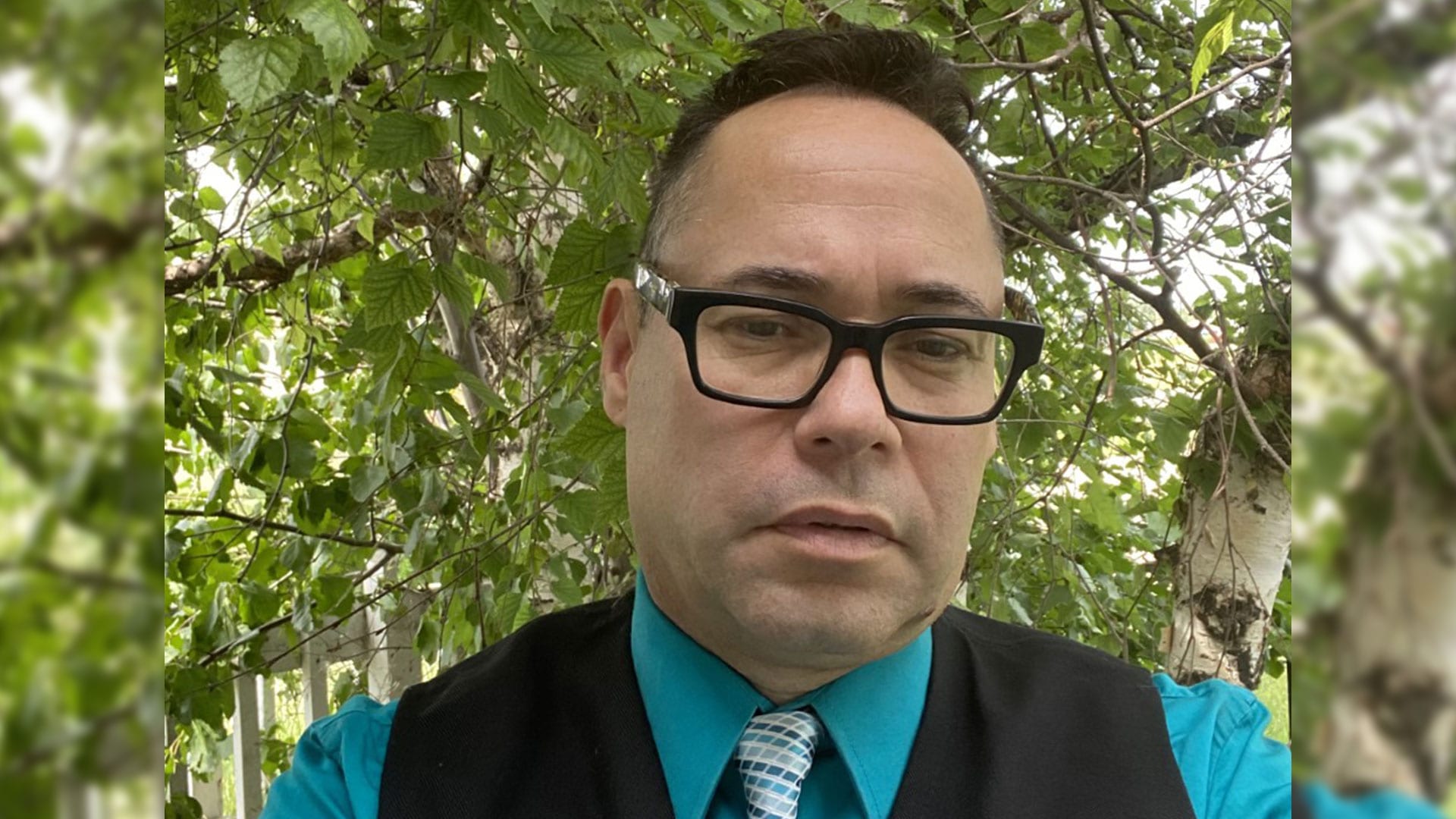
He consulted records from the Roman Catholic data centre in Yellowknife and brought in ground penetrating equipment to search for remains.
The work confirmed the oral history.
In 1948 the church ploughed over the burial site to make way for a potato field, but not before moving the bodies of eight missionaries and reburying them in the community’s current cemetery.
“It’s a sacred thing. It’s a burial ground,” Lafferty told APTN News. “I’m hopeful additional communities along the Mackenzie River and beyond the Northwest Territories will obtain funding to do similar research as a means to honour, respect and pay homage to the residential school survivors who are buried and their ancestors that may be in unmarked graves.”
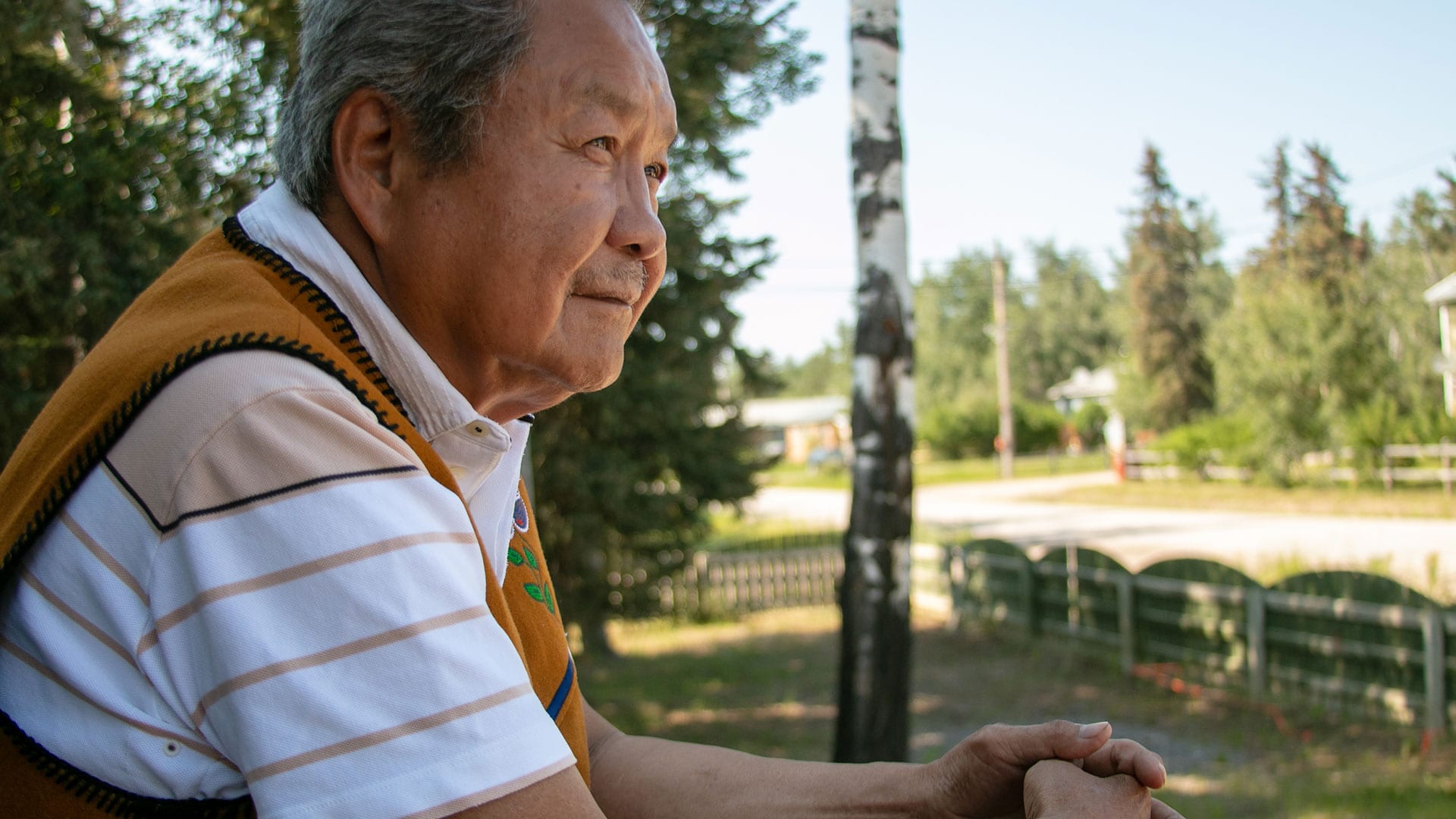
Sam Gargan, knows the history of fractured relationships dating as far as back the Doctrine of Discovery.
“Issued by the church, it considered these lands not habitated by human beings. After the Paris Agreement treaty, there was a royal proclamation. That proclamation issued stated that churches cannot go in Aboriginal lands without their permission,” Gargan said. “I think the treaties from one to 11 was also created with that impression.”
Gargan, a residential school survivor who attended Sacred Heart school told APTN while the monument is a step in the right direction, it does not bring him closure.
“We really need to hear from those that did the damage first. And notice that and if you listen to the truth and reconciliation report, no, in order to reconcile, you have to hear the truth,” he said.
According to the final report of the Truth and Reconciliation Commission of Canada (TRC), it was a common occurrence in the Northwest Territories in the first half of the twentieth century for no medical examinations prior to school admissions.
“The road that goes along the back there, we’re driving over graves. There wasn’t like plots of graves. A lot would have been during the flu epidemic and then and a lot would have been because of abuse,” Gargan said.
A lack of documentation means the number of dead in Fort Providence, is likely much higher.
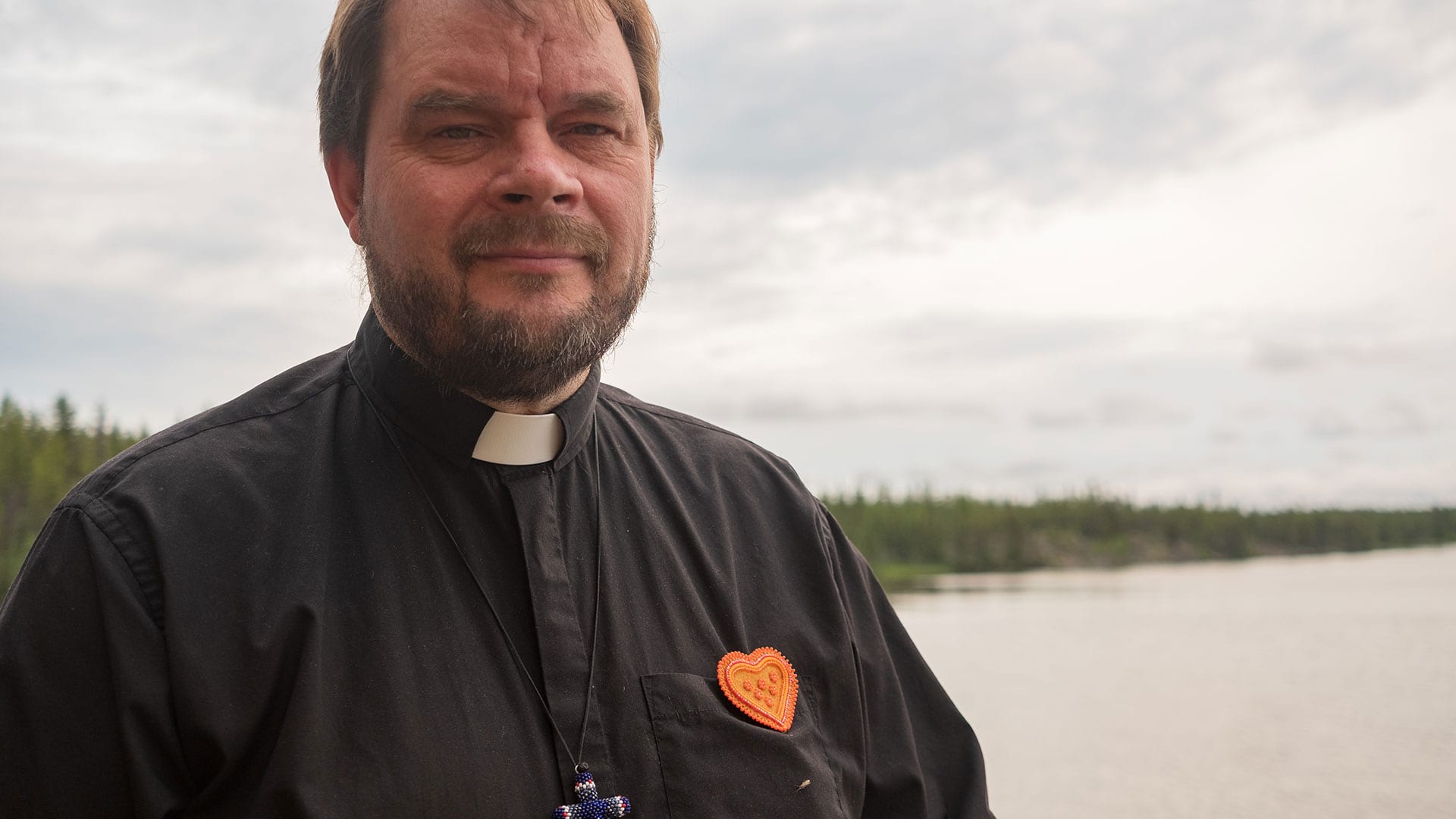
Bishop Jon Hansen of the Mackenzie-Fort Smith Roman Catholic Diocese in Yellowknife told APTN that a lot of residential school records left the north when the churches left the schools.
“Any records that we do have been forwarded to the TRC, in Winnipeg. In 2016 that was done. What we do have is a lot of photos in archives. We have sacramental records we can help with — births, dates and deaths,” Hansen said.
Immediately following the release of the TRC’s calls to action, Hansen spoke publicly about his disappointment in Pope Francis’ absence of an apology for role the Catholic Church played in operating residential schools.
“I understand that there’s complications that is not easy to bring a foreign dignitary to Canada, but I think at this point, it’s something that needs to be prioritized,” he said.
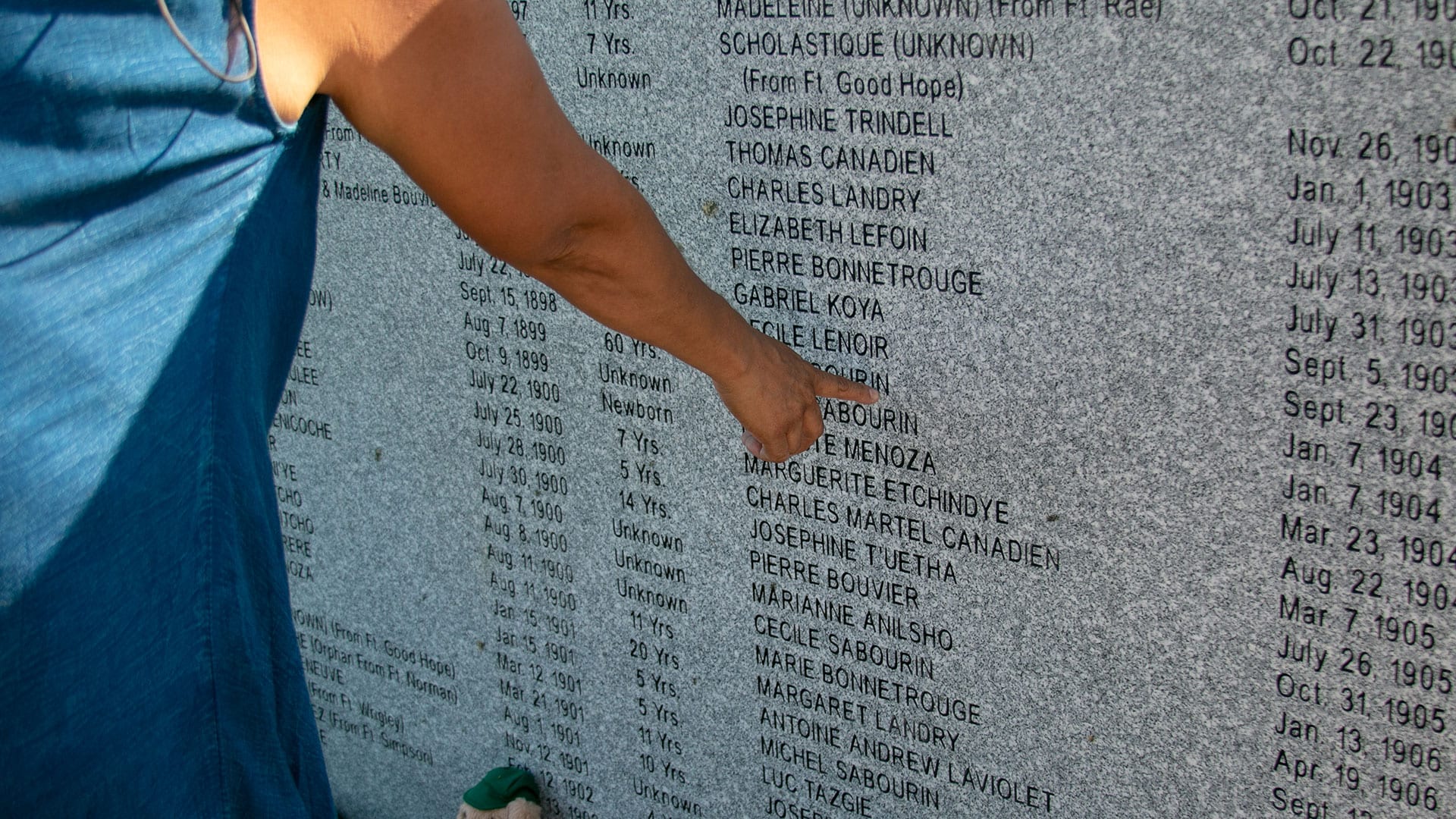
Nadli, agreed that there should be a papal apology and greater effort by the church to produce records for survivors and families.
She’s worked with a public trust in hopes of accessing her mother’s records.
“I think about that now what she experienced that couldn’t even let her come home the ghosts that she carried with her were thought traumatic she couldn’t stay here this is her home,” Nadli said.
For now, she’ll continue to visit the monument as part of her own healing journey.
The Indian Residential Schools Resolution Health Support Program has a hotline to help residential school survivors and their relatives suffering with trauma invoked by the recall of past abuse. The number is 1-866-925-4419.









